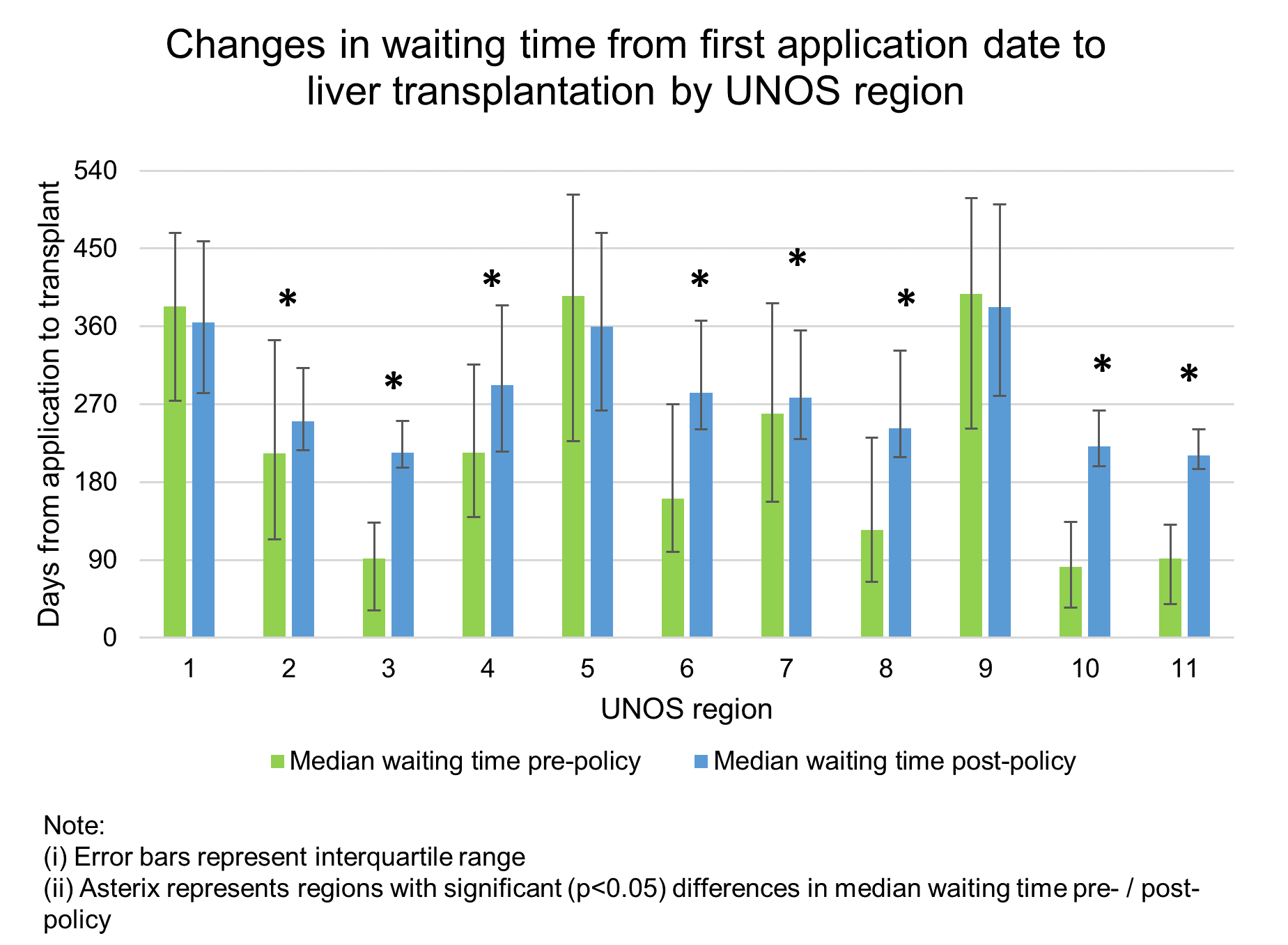Effect of 2015 T2 Hepatocellular Carcinoma Exception Policy Implementation on Waitlist Time and Tumor Characteristics
1Internal Medicine, University of Pennsylvania, Philadelphia, PA, 2Gastroenterology, University of Pennsylvania, Philadelphia, PA
Meeting: 2020 American Transplant Congress
Abstract number: A-140
Keywords: Allocation, Hepatocellular carcinoma, Liver transplantation, Waiting lists
Session Information
Session Name: Poster Session A: Liver: Hepatocellular Carcinoma and Other Malignancies
Session Type: Poster Session
Date: Saturday, May 30, 2020
Session Time: 3:15pm-4:00pm
 Presentation Time: 3:30pm-4:00pm
Presentation Time: 3:30pm-4:00pm
Location: Virtual
*Purpose: A United Network for Organ Sharing (UNOS) policy change in 2015 created a 6-month delay in the receipt of T2 hepatocellular carcinoma (HCC) exception points to require observation of nonaggressive tumor biology and improve the disparity in liver transplant (LT) access for non-HCC candidates. We hypothesized that the policy change has resulted in longer waitlist time and more aggressive bridging locoregional therapy (LRT).
*Methods: Patients transplanted with a first T2 HCC exception application on or after 10/8/2015 (last LT date 3/31/2019; post-policy) were compared to T2 HCC exception LT recipients from 1/1/2010-9/31/2015 (pre-policy) using data from the UNOS. Descriptive statistics were used to compare LT recipients in each group.
*Results: In total, 3,836 pre-policy and 1,644 post-policy LTs were identified. Post-policy LTs had longer wait times from first application to LT (median 259 days [211, 360] vs. 182 [92, 346]; p<0.001), but with significant regional variation (Figure). There was no difference in the proportion of patients who underwent LRT prior to their first exception application (11.6% pre-policy vs. 11.4% post-policy; p=0.9). Pre-policy patients received fewer treatments overall than post-policy LTs (0 LRT: 21 vs. 9.4%; 1 LRT: 53.7 vs. 44.9%; 2 LRTs 18.7 vs. 30.2%; and >3 LRTs 6.6 vs. 15.6%; p<0.001). Among those with >1 application before LT (N=3,998), post-policy patients were less likely to have multiple tumors (7.7% vs. 14.6%; p<0.001) or alpha-fetoprotein >10ng/mL (28.6% vs. 43.4%; p<0.001) and had smaller residual tumor size of their dominant lesion (median 0cm [0, 1.8] vs. 1.4cm [0, 2.2]; p<0.001) at the time of the last application. On explant, there was no significant difference in the number of tumors, largest tumor size or proportion with extra-hepatic involvement between the two groups (p>0.05 for all). Post-policy LTs were more likely to have complete necrosis of all tumors on explant (23.5% vs. 18.3%; p<0.001).
*Conclusions: In nearly half of UNOS regions, the 2015 HCC policy has minimally changed waiting time for these candidates. However, T2 HCC recipients are more likely to receive more aggressive LRT leading up to LT in the post-policy era.
To cite this abstract in AMA style:
Durkin C, Kaplan DE, Bittermann T. Effect of 2015 T2 Hepatocellular Carcinoma Exception Policy Implementation on Waitlist Time and Tumor Characteristics [abstract]. Am J Transplant. 2020; 20 (suppl 3). https://atcmeetingabstracts.com/abstract/effect-of-2015-t2-hepatocellular-carcinoma-exception-policy-implementation-on-waitlist-time-and-tumor-characteristics/. Accessed December 25, 2025.« Back to 2020 American Transplant Congress

